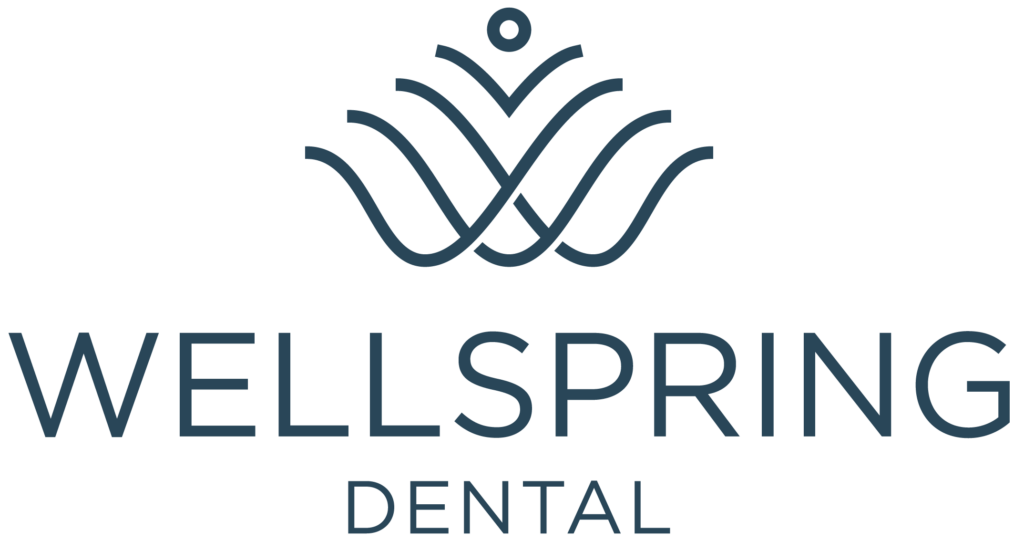LET’S talk ABOUT FUNCTIONAL DENTISTRY
What is functional dentistry?
Functional dentistry is not a separate specialty in dentistry, just a shift in approach and mindset. Dentists using a functional approach have the same dental degree and training as other dentists, endorse brushing and flossing, and recommend having a cleaning at least twice per year. This style of dentistry aims to have a wide variety of treatment options that address root causes, which may be a little different than what you’ve experienced in the past.
We do all the normal dentist stuff (with a twist).
Plus, we factor in everything else that’s happening in your body.
Then, put it all together to help you breathe, sleep, smile, and thrive.
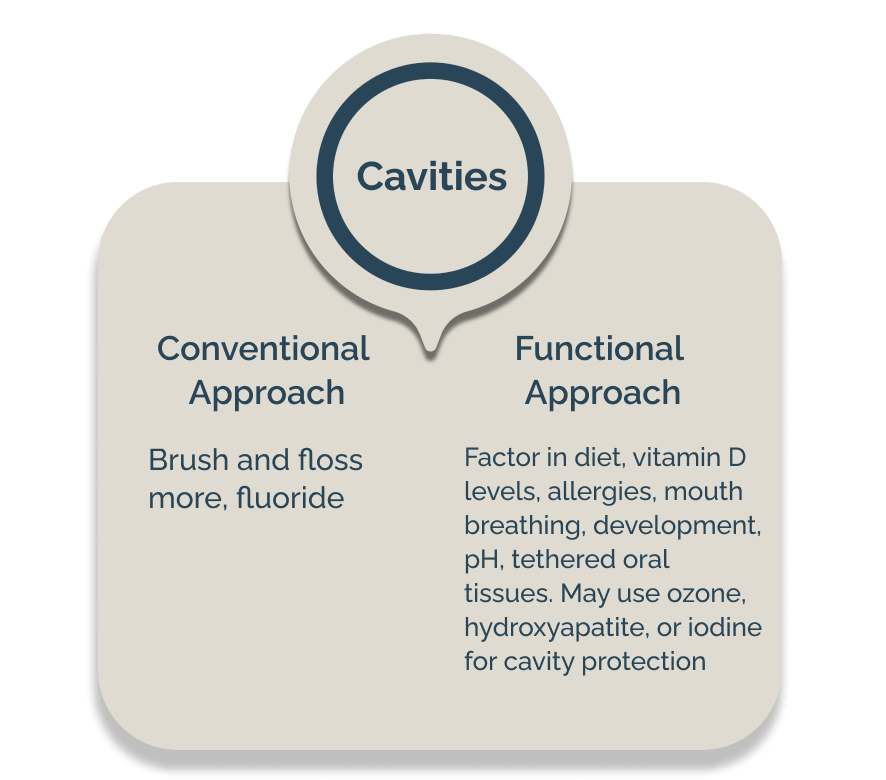
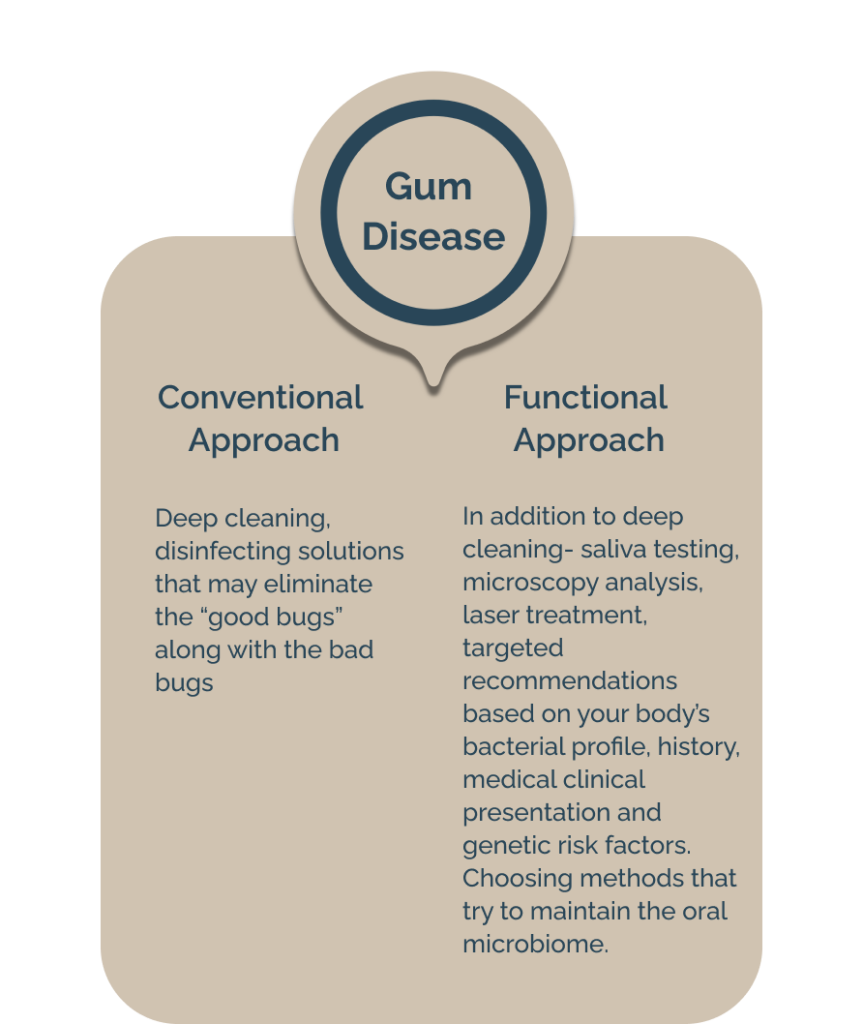
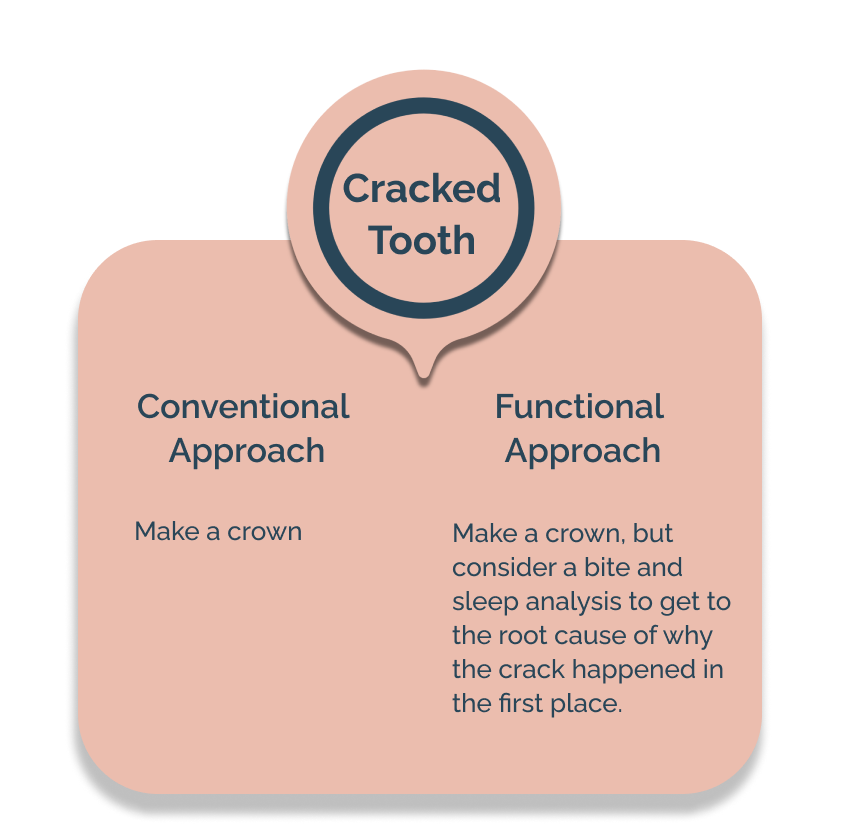
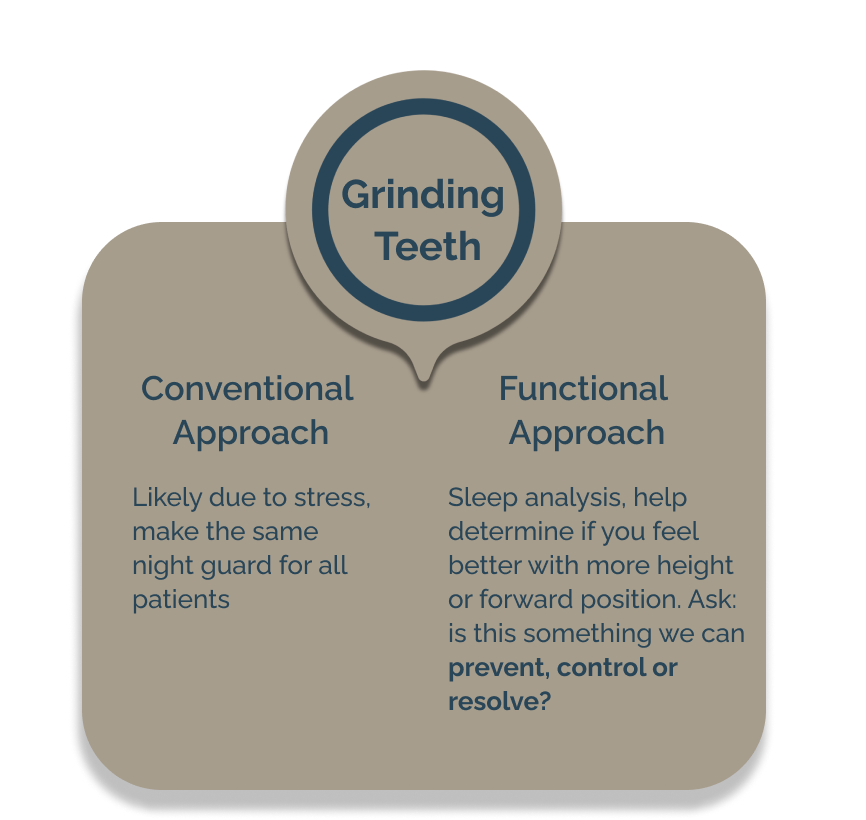
We do all the normal dentist stuff (with a twist).
for all your oral health needs. Just know that it’s in our nature to identify and overcome the root cause of your concern and prevent future issues, not just treat symptoms.
Plus, we factor in everything else that’s happening in your body.
Then, put it all together to help you breathe, sleep, smile, and thrive.
Conventional Approach
Functional Approach
Safe Amalgam Removal


Saliva Testing
Just like your physician uses bloodwork to help make recommendations to keep you healthy, functional dentists use saliva testing in the same way. We look at the saliva under a microscope and may recommend sending off a sample of saliva to learn specifically which bacteria are present. Checking for the 5 most harmful bacteria in the mouth is crucial for determining if our oral health is putting our overall health at risk. Taking gum measurements alone does not address the cause of why tissue loss occurred in the first place, and identifies the issue after damage has already occurred.
With this knowledge of which bacteria are present, we can target therapies that are effective for you, then re-test over time to see if we are maintaining results.
Bite Analysis and Treatment

Ozone
Therapy
Dental Surgeries
3D guided implant surgery takes digital treatment planning to the next level by allowing us to both visualize the steps of your procedure as well as create sequencing templates custom to you. 3D guided implant surgery combines CT scanning technology and CAD/CAM technology, providing you with unparalleled accuracy in the placement of your dental implants and restorations. In this way, we can optimize the location, angle and depth of your implants, leading to predictable and healthy outcomes.
A frenuloplasty is a liberation of the tongue from anatomical restrictions.
- Restrictive lingual frenulum, also known as ankylglossia or tongue-tie, can limit the movement and range of motion of the tongue. The tongue is important in our daily functions including breathing, sleeping, eating, and communicating. Good tongue mobility is essential for optimal growth and development of the jaws.
- It’s common that if the restriction is severe, it would cause speech or feeding issues early in life and be addressed then.
- If the restriction is mild to moderate, the early signs may not have been as obvious and it is common for this issue to go undiagnosed for a long time. Symptoms that could be related to a tongue tie that may become apparent later in life are snoring, difficulty sleeping on the back, headaches, mouth breathing, high cavity risk, tooth wear, restless or unrefreshing sleep, jaw pain, neck tension, and forward head posture.
- The body will find a way to do the vital functions of breathing, sleeping, eating, and communicating, but in the presence of a tongue tie, compensations will develop. The way the body will perform these functions in the presence of a tongue tie involve open mouth breathing, side sleeping, teeth clenching, which then lead to issues like TMJ disorders and musculoskeletal posture issues. These compensations are developed to offset the restriction and compromised breathing felt when standing straight up or laying on the back. An analogy we like to use is it’s like walking with the laces of both shoes tied together. You could still walk, but not to your full potential.
- By releasing the tension in the lingual frenum and allowing for freedom of movement of the tongue, many aspects of health can be improved.
- The procedure itself is performed awake under local anesthesia using a CO2 laser after a patient has prepared with myofunctional therapy. This is like physical therapy for the tongue, and allows for safe, predictable procedures. We would only perform a procedure to improve function, and the therapy helps us determine those goals.
- It is important to evaluate tongue ties in the context of tongue space and tongue tone, and treating only if and when it is appropriate. This procedure is one piece of a larger airway-health plan we can help develop for your individual needs.
- Oral Frena are the fibrous attachments of the lips and tongue to the jaws, and they are structures we all have. Everyone’s oral frena differ based on many factors including genetics, epigenetics, nutrition, development. If the oral tissues are restrictive, it can negatively impact feeding early in life. Healthy tongue function is vital to infant feeding, sleeping, and growth, so identifying challenges early on can help get babies off to a good start. By collaborating with a team to help with healthy oral function and body movement, we can help improve infant feeding with a frenectomy when appropriate. This procedure is performed to relieve tension in restrictive oral tissues with a state-of-the-art CO2 laser for increased precision and improved healing. The procedure itself is brief, usually less than 60 seconds, and infants are encouraged to feed immediately afterwards.
- The pressure from the tongue during swallow forms the shape of the jaws, and the jaw shape and position dictates how the face and airway will develop. So while infant feeding is important for nutrition, it is also crucial for development, which is why we are so passionate about our work with infants.
